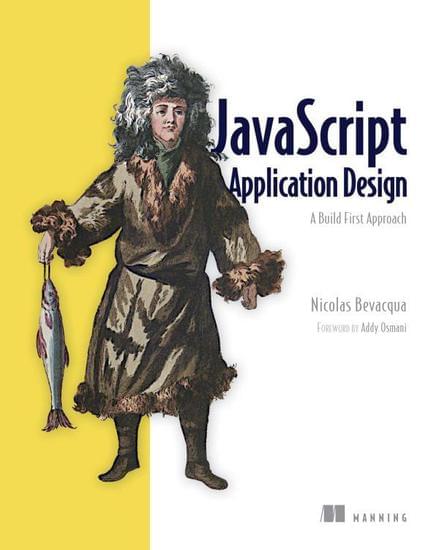“Enjoy the ride through the process of improving your development workflow.”
– Addy Osmani, Google
The fate of most applications is often sealed before a single line of code has been written. How is that possible? Simply, bad design assures bad results. Good design and effective processes are the foundation on which maintainable applications are built, scaled, and improved. For JavaScript developers, this means discovering the tooling, modern libraries, and architectural patterns that enable those improvements.
JavaScript Application Design: A Build First Approach introduces techniques to improve software quality and development workflow. You’ll begin by learning how to establish processes designed to optimize the quality of your work. You’ll execute tasks whenever your code changes, run tests on every commit, and deploy in an automated fashion. Then you’ll focus on designing modular components and composing them together to build robust applications.
Write modular, cleaner, and easily testable code. Using a modular approach to application design, you’ll learn how to write smaller components that work well together. You’ll be able to master complex asynchronous flows in JavaScript. Learn different kinds of testing such as unit testing, integration testing, and visual diff. testing. Design a REST API and implement it.
Table of Contents
I Build Processes
- 1 Introduction to Build First
- 2 Composing Build Tasks and Flows
- 3 Mastering Environments and the Development Workflow
- 4 Release, Deployment, and MonitoringFree!
II Managing Complexity
- 5 Embracing Modularity and Dependency ManagementFree!
- 6 Understanding Asynchronous Flow Control Methods In JavaScript
- 7 Leveraging Model-View-Controller
- 8 Testing JavaScript Components
- 9 REST API Design and Layered Service Architectures
III Appendices
- A Modules in Node.js
- B Introduction to Grunt
- C Picking Your Build Tool
- D JavaScript Code Quality Guide
Praise For This Book
@andywalpole @buildfirst @nzgb it's an incredible book, changed how i thought about the build process
— Shanan (@shanan) August 31, 2015I am in love with this book:
"JavaScript Application Design
A Build First Approach" by @nzgb
http://t.co/BZNTekBfZP
#javascript #frontend
— Nouranology(); (@Nouran_Mhmoud) July 13, 2015Definitely worth having. ⭐️⭐️⭐️⭐️⭐️ https://t.co/81LkEHULpV
— Chris Williams (@amboy00) July 13, 2015Excited to read "JavaScript Application Design" by @nzgb - order it here: http://t.co/mCiTuCyFCk pic.twitter.com/kEyyYMt5i5
— Matt Mazur (@mhmazur) February 27, 2015Really digging @nzgb's JavaScript Application Design, esp Part 2 "Managing Complexity". Exactly what I needed! - http://t.co/VH7x6igP3U.
— Matt Netkow (@dotNetkow) February 17, 2015Reading "Javascript Application Design" by @nzgb, a must read for serious devs who wants to make great quality software #buildfirst
— Enzo Luis Strongoli (@Hazzard) December 9, 2014Feedback: "I bought the JavaScript Application Design MEAP edition and it's BEASTLY super-good!" He's already using it at work
@ManningBooks
— JavaScript A. Design (@buildfirst) November 10, 2014"JavaScript Application Design" by @nzgb might have the clearest explanation of client side MVC I've read. http://t.co/LbOTTEBgkT
— Adam D. Scott (@adamdscott) August 10, 2014Purchasing Options
There are tons of freely available code samples on the GitHub repository. There’s over 90 code samples that range from the basics such as creating an automated Lint task, to more advanced tasks such as deploying to Amazon Web Services or inlining critical CSS to improve perceived performance.
The book can be purchased directly through Manning or on Amazon.
